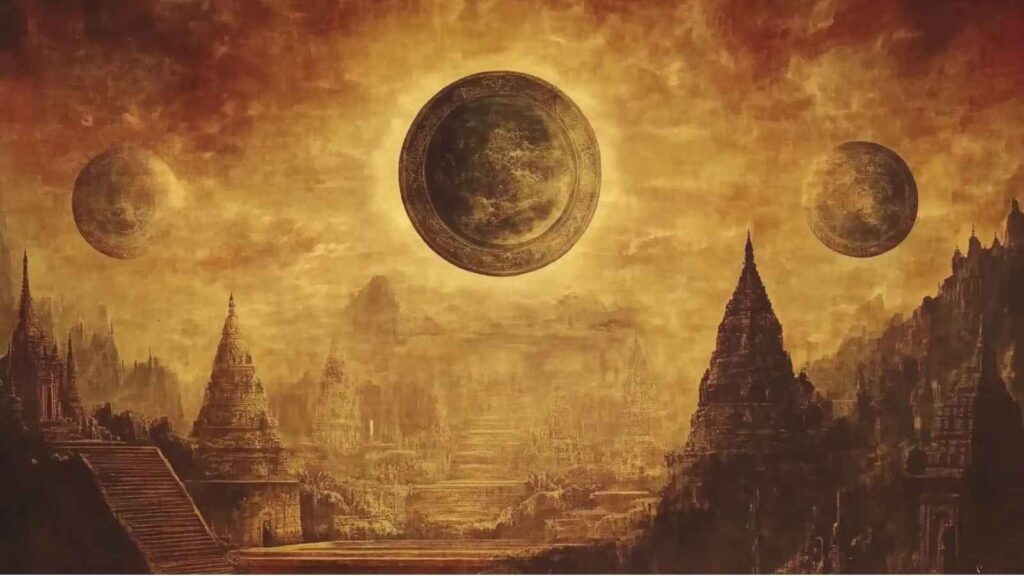Hindu thought upholds a vision of universal rights rooted in its concept of Dharma, the cosmic law that governs individual conduct, social order, and the fabric of existence. At its heart lies Sarva‑Dharma—the principle that all paths to truth and all religious traditions deserve equal respect and dignity. Far from a mere slogan, Sarva‑Dharma finds expression in the Rig Veda’s declaration “Ekam sat vipra bahudhā vadanti” (“Truth is One; the wise call it by many names”), in Upanishadic teachings of unity-in-diversity, and in the writings of modern thinkers such as Vivekananda, Aurobindo, and Gandhi. This holistic framework not only underpins Hinduism’s internal pluralism but resonates profoundly with contemporary notions of human rights, equality, and secularism. In examining its scriptural roots, philosophical elaborations, and real‑world applications—from India’s constitutional ethos to interfaith initiatives—we uncover a living tradition of universal rights that remains as relevant today as in antiquity.
Read More About sacred texts
Introduction to Sarva‑Dharma

Understanding Dharma
In Hindu philosophy, Dharma transcends the narrow meaning of “religion” or “duty”; it denotes the universal order—the set of principles that sustain the cosmos, society, and individual well‑being IJIRL. Every being and phenomenon participates in this all‑pervading law, which integrates ethical norms, natural laws, and spiritual truths into a cohesive whole IILS India.
Defining Sarva‑Dharma
Sarva‑Dharma literally means “all Dharma(s)” and implies equal respect for all religious paths. Though popularized by Mahatma Gandhi in the 20th century, the essence of Sarva‑Dharma pervades Hindu tradition, affirming that every individual has the right to follow their own path to truth and self‑realization Wikipedia.
Scriptural Foundations
Rig Veda: “Ekam sat vipra bahudhā vadanti”
The famous Rig Veda mantra declares:
“Ekam sat vipra bahudhā vadanti; <br>
Indra, Mitra, Varuna, Agni: <br>
They call Him by many names”
(Rig Veda 1.164.46) Wikipedia.
This verse proclaims the oneness of ultimate reality and endorses multiple expressions thereof, laying the groundwork for religious pluralism.
Upanishadic Unity
The Upanishads build on Vedic monism by teaching that the Brahman (the Absolute) is the substratum of all diversity. Svetāśvatara Upanishad states that the divine appears in manifold forms yet remains one, inviting seekers to honor diverse worship practices as facets of the same reality SHRI ADI SHAKTI: THE MOTHER GODDESS.
Dharma as Natural Law
Ancient legal texts such as the Dharmaśāstras treat Dharma as an ethical and cosmological norm rather than sectarian law. Manusmṛti defines Dharma as that which upholds the world, prescribing duties aligned with cosmic welfare and individual righteousness—thus conferring universal rights to dignity, justice, and moral agency upon all beings IJIRL.
Historical Evolution of Sarva‑Dharma

Early Vedic and Epic Period
Vedic seers celebrated dharmic diversity—from hymns praising various deities to ritual inclusivity. The Mahābhārata narrates episodes where saints accept offerings from all castes and faiths, showcasing an ethos of universal respect hinduhumanrights.info.
Bhakti Movement and Saints
Medieval Bhakti saints like Dnyāneśvara and Kabīr transcended caste and sectarian bounds, asserting that sincere devotion, not ritual form, grants access to the divine. They echoed the Vedic call to honor all sincere paths Wikipedia.
Modern Revival: Vivekananda and Aurobindo
Swami Vivekananda argued that Dharmic duty (svadharma) pertains to one’s innate capacities and life situation, not birth-based caste, and affirmed seeing the “Supreme Lord dwelling equally in all beings” (Bhagavad Gita 13.27‑28) Wikipedia.
Sri Aurobindo reinterpreted Dharma as the evolutionary purpose of consciousness, advocating individual fulfillment as service to the cosmic order Wikipedia – Die freie Enzyklopädie.
Gandhi’s Sarva‑Dharma Samābhāva
In 1930 Gandhi coined Sarva‑Dharma Samābhāva to unite Hindus and Muslims under the freedom movement, urging equal respect for every faith. He viewed religion as a unifying social force, not a divisive one Wikipedia.
Sarva‑Dharma and Universal Rights
Dharma as Basis for Rights
The concept of universal human dignity (ādarya) finds its roots in Dharma’s affirmation that every being partakes in the divine order and thus deserves respect and protection IILS India.
Dignity and Equality in Texts
The Rig Veda states, “One human race exists” (Rig Veda 5.60.2), asserting inherent equality International Review of the Red Cross. The Mahābhārata enjoins compassion and justice towards all creatures, prefiguring modern human rights norms IJIRL.
Comparison with Modern Human Rights
While Western human rights rest on Enlightenment individualism, Sarva‑Dharma roots rights in cosmic interdependence. This imparts a duty‑based dimension: rights co‑exist with responsibilities to uphold collective welfare IJRTE.
Philosophical Perspectives
Advaita Vedānta: Oneness in Diversity
Shankara’s Advaita Vedānta posits non‑dual Brahman as reality; diversity is māyā (illusion). Recognizing the divine in every tradition fosters universal tolerance and rights Wikipedia.
Bhakti Universalism
Saints like Goswāmī Tulsīdās and Mīrābāī worshipped the same Lord regardless of ritual forms, modeling inter‑faith devotion and social inclusion Wikipedia.
Modern Reconstructions
Contemporary scholars (e.g., Amartya Sen) credit Sarva‑Dharma as India’s secular ethos, influencing Article 51A(e) and secular policy frameworks ﹘ a state‑endorsed pluralism that secures freedom of religion Wikipedia.
Sarva‑Dharma in Contemporary India
Constitutional Secularism
Although the Constitution declares India secular, its form aligns with Sarva‑Dharma: the state “does not separate religion and state but embraces all religions” ﹘ a reflection of Gandhi’s equal‑respect ideal Wikipedia.
Interfaith Initiatives
Organizations like the Parliament of the World’s Religions and India’s Sarva-Dharma Sammelans draw inspiration from Sarva‑Dharma to foster dialogue, conflict resolution, and communal harmony Mahatma Gandhi.
Critiques and Challenges
Equivalence vs Respect
Critics argue Sarva‑Dharma risks equating deeply divergent doctrines, diluting specific truths. Defenders respond it affirms equal dignity, not uniformity of beliefs Pragyata.
Social Realities
While textual ideals celebrate pluralism, caste and communal tensions persist. Translating Sarva‑Dharma into practice demands structural reforms and continuous dialogue Hindu Post.
Case Studies and Applications
Temple of All Faiths
The Temple of All Faiths in Hyderabad physically embodies Sarva‑Dharma, housing chapels for multiple religions under one roof ﹘ a powerful symbol of unity in diversity SHRI ADI SHAKTI: THE MOTHER GODDESS.
Education and Curriculum
Schools integrating comparative religion modules draw on Sarva‑Dharma to teach respect, reduce prejudice, and instill universal rights values from an early age Legal On Us.


